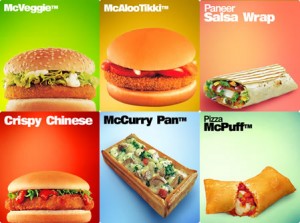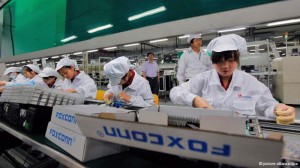After reading Mary Truong’s recent blog post in which she outlined “5 reasons why performance management is good,” and related this to her own work experience, I was prompted to reflect on my experiences with performance management. I’ve had a few performance reviews in my day, and looking back on it now I can see that these reviews are indeed an effective tool in outlining company expectations and providing feedback so that employees are aware of what areas they are meeting or exceeding expectations in, and which areas of their performance are in need of improvement. However, I will say that being on the employee side of a manager-to-employee discussion is quite awkward. As someone who takes criticism very personally, having my performance critiqued by someone that I know well can be uncomfortable to say the least. Although, what I find even more uncomfortable is having to critique others, so I dread the day that I may have to evaluate someone’s work and discuss it face-to-face with them. But as unenjoyable as I personally find performance reviews, I do recognize their value in the workplace and I encourage companies to adopt performance management practices to establish company objectives and monitor employees’ execution of tasks.
Get a Move On
By pure coincidence, very soon after publishing my previous post I found an article that relates to its subject perfectly. The post was about how Hostess Brand Inc.’s lack of innovation left it trailing behind competitors and led to the company’s ultimate demise. The article “Accelerate!” by John P. Kotter acknowledges that “perhaps the greatest challenge business leaders face today is how to stay competitive amid constant turbulence and disruption.” This certainly echoes Hostess’s situation; the company failed to stay competitive in the face of changing consumer tastes. The article provides examples of companies that “recognized the need for a big strategic move but couldn’t pull themselves together to make it,” again recalling Hostess.
According to the article, “the old ways of setting and implementing strategy are failing us.” The world is moving faster and companies need to be rethinking their direction and implementing operational changes every few years if they want to stay in the game. Kotter proposes a second operating system, one that designs and implements strategy with an “agile, networklike structure” and a different set of processes from the traditional hierarchy of companies. This second system will allow companies to react more quickly and effectively to market changes or operational inefficiencies.
No More Twinkies
Hostess Brand Inc, maker of Twinkies, Ding Dongs and Ho Ho’s, announced today that it will be shutting down. While this came as a shock to many loyal Hostess customers, the company had been suffering from major problems for years. Management changes, rising labour costs and debt were all contributors to the flat to slightly down sales volume in recent years. However, a lack of investment in marketing or innovation may have played an even larger part in the company’s demise. While competitors developed new snacks and variations of their brands in order to keep up with Americans’ changing tastes towards healthier foods, Hostess snacks remained basically the same. After filing for bankruptcy in 2004, the company needed to reinvent itself. Yet Hostess was unable to change its image as a maker of unhealthy products with suspiciously long shelf-lives. This, combined with union strikes and absurd pay hikes for executives, led the company into such a dire financial state that it was forced to shut down operations.
Hostess failed to develop a strategy that would keep it competitive with the rest of the market. In order for a company to survive, it must continue to innovate and keep up with consumer preferences.
http://news.yahoo.com/twinkie-maker-hostess-reaches-end-line-181830998–finance.html
Social Enterprise
Social entrepreneurship, the idea of using entrepreneurial principles to create and manage a “social purpose venture,” is in my opinion one of the more intriguing topics we’ve covered in class. The inspiring stories we heard about social entrepreneurs who have had major impacts on their communities made me want to explore the subject further.
While researching social enterprise in Vancouver, I happened across an article called The Case for More Social Entrepreneurship by Kate MacLennan. The article describes an example of a Vancouver registered charity that operates as a social enterprise: the Potluck Cafe Society. The Society’s cafe betters the Downtown Eastside community by employing disadvantaged residents and serving free meals. Interestingly, the busier the cafe gets, the more costly it is to keep it running, and these costs are mostly subsidized by revenues from the Society’s catering operation. In 2011 the catering operation earned about $500,000 less than executive director Heather O’Hara’s “ideal” operating budget for the cafe; nevertheless, the Society ensures that the cafe remains in operation because, as O’Hara explains, the cafe “serves a really important community function.”
The Potluck Cafe Society serves as a reminder that there is more to business than profit maximization; entrepreneurs can use their skills to earn revenue and better the world around them.
Marketing: What Not to Do
“Marketing 101 dictates that you generally don’t point out your own product’s shortcomings in your own advertising.” One would assume that this would be instinctive to marketers hired to fix image problems of well-established companies. Yet, as Peter Nowak points out in a recent blog post, RIM’s “BlackBerry by choice” campaign (introduced as a response to the suggestion that people only use BlackBerrys if forced to by employers) is indeed fixating on the negatives of the product rather than any positives. As Nowak states, “saying that users are there ‘by choice’ highlights a sort of defiance against something many find more desirable,” and “proclaiming that you’ve chosen something that isn’t very popular also highlights the fact that there may be reasons for why it isn’t popular in the first place.” I agree that “by choice” is a poor slogan for any product; it begs the question, “What’s wrong with it?” It is implied that some people are beingforced to buy or use it.
I recommend Nowak’s blog post to those new to the subject of marketing. The post is a fun, easy read yet provides thought-provoking insights on how to be successful in the world of marketing.
Re: A Revolutionary Solution for Malnutrition
A blog post by Ryan De Iaco on a new product called “Sprinkles” caught my eye. “Sprinkles” are small sachets of a powdered food fortification product that provide a daily dosage of minerals and vitamins. The powder can conveniently be sprinkled onto and dissolved into any food without altering its taste or texture. The blend of micro-nutrients is being touted as an inexpensive remedy for vitamin and mineral deficiency; the product has so far been distributed to 15 million children in developing countries with the main goal of eradicating iron deficiencies in children around the globe.
I admire the efforts of Dr. Stanley Zlotkin, the developer of “Sprinkles,” and agree with Ryan that he is the epitome of a social entrepreneur. Yet while the concept of “Sprinkles” is extremely exciting, I’m a little skeptical that the product will solve world malnutrition and “serve the needs of every starving child.” Yes, it may decrease worldwide anemia rates if distribution expands, but I think it unlikely that this one product will have a tremendous impact on the global problems of malnutrition and starvation. Nevertheless, I will be rooting for Zlotkin and his noble quest to provide a remedy for vitamin and mineral deficiencies.
Find the original article here: http://bx.businessweek.com/social-entrepreneurship/view?url=http%3A%2F%2Fwww.socialenterprisebuzz.com%2F2012%2F10%2F17%2Fsprinkles-micronutrient-sachets-for-children%2F
McDonald’s: Masters of Glocalization
Nataly Kelly’s recent blog post “McDonald’s’ Local Strategy, from El McPollo to Le McWrap Chèvre,” analyzing McDonald’s successful foray into foreign markets, caught my attention as it relates to several ideas we have been covering in class. Kelly describes some of the menu variations (eg. McSausage Burgers in Germany) that McDonald’s offers in different parts of the world to cater to local populations. This is a perfect example of glocalization, an integral part of McDonald’s business model. McDonald’s has gained a competitive advantage by positioning themselves as the only truly international fast-food chain, and they have managed to maintain their success by knowing, and accommodating, the tastes and preferences of local consumers all over the world. According to Kelly, five major lessons can be taken from McDonald’s global success:
1. Don’t confuse your brand with your products
2. Figure out which products have international appeal
3. View a new market as a chance to take on new brand attributes
4. Remember that “small markets” may very well define your future
5. Let your customers tell you what they want
I found Kelly’s blog post very extremely relevant to topics we’ve covered in class. It furthered my understanding of “glocalization” and strategy, and clearly outlines steps and precautions that a company should take in order to be successful at glocalization. Kelly’s five takeaways are ones that I will keep in mind throughout this course; they seem to be practical ideas that would be very important for a company to take into account if it was considering geographical expansion.
Clever Charity Ad
It’s not just for-profit companies that seek to create effective ads that will promote the organization and entice consumers to give them money; charities need to advertise too. Haitian non-profit Water Is Life employed DDB New York to create a unique ad for the charity, and the result is a striking yet humourous video in which ordinary Haitians read the whiney tweets of Twitter users who use the hashtag “#firstworldproblems.” The image of a young boy saying, “I hate when my leather seats aren’t heated” while sitting on a pile of dirt and debris in front of a dilapidated building is compelling in its irony. In my opinion, this is a very clever advertising angle; it appeals to the target demographic of middle-class/wealthy people in western societies by relating to them in a fun way that also manages to get the message across. It puts what some of us would call “problems” into perspective by showing people who have real problems and actually need help. The video induces an appropriate amount of guilt without coming off as sappy or begging as charity advertisements often do, which in my opinion is a significant achievement.
See the video for yourself here:
http://www.businessinsider.com/ddbs-firstworldproblems-haiti-water-ad-2012-10
Unhappy Employees Halt iPhone 5 Production
Last Friday saw 3,000 to 4,000 workers at a Foxconn iPhone 5 manufacturing plant in central China go on strike. Production of the phone has been halted, and the timing could not be worse for Apple Inc; the corporation is already facing supply constraints just weeks after the massive global launch of its latest smartphone.
The China Labor Watch has reported that workers are striking in response to “over-exacting quality controls as well as demands they work through the week-long National Day holidays.” Work-place tensions are apparently not new to factories operated by Taiwanese contract manufacturing giant Foxconn; riots in a northern China facility and conflicts between workers and quality control inspectors had previously been reported.
Across China, Apple and Foxconn have been accused of providing poor working conditions and low wages. These claims have led the companies to “organize an audit of factory conditions, raise wages, improve safety and reduce overtime,” but clearly more action needs to be taken to ensure that wokers are satisfied. Employee happiness may not be at the top of every corporation’s priorities, but this strike demonstrates that unfair treatment of employees can prove extremely detrimental to production and is therefore something that companies ought to take seriously.
Ethical Issue in Business
A recent edition of The Guardian featured a story about the controversial use of prison labour. The article reported that prisoners are being employed by a telemarketing company for pay far below minimum wage -in fact, the prisoners are earning the equivalent of only 60 cents an hour. This raises concerns from several different angles; some people worry that the prisoners are being forced into less-than-ideal working conditions, while others see employment as an undeserved reward for convicts who are supposedly in prison to be punished. There is also the issue of cheap prison labour displacing non-prison workers and creating an advantage for companies that are willing to cut labour costs by hiring from the prison work force.
In his article “Profiting from Prison Labour” in Canadian Business, Chris MacDonald argues that while prison labour is, “to be sure, an ethical issue,” he can see no problem from a business ethics standpoint. According to MacDonald, companies and displaced non-prison workers have no justified cause for complaint because “no one has a right to any particular job” and using prison labour does not give a company any unfair advantage over another. MacDonald states that the (legal) use of prison labour is completely ethical.






